Article 7 of the Rome Statute, which established the International Criminal Court (ICC), defines crimes against humanity as criminal acts “when committed as part of a widespread or systematic attack directed against any civilian population, with knowledge of the attack.”
Article 7 (1) also determines the actions which amount to crimes against humanity in 11 subparagraphs, including murder, torture, extermination, enslavement, rape, persecution and the intentional imposition of great physical or mental suffering.
IranWire has reported for several weeks on the Iranian authorities’ use of blinding as a weapon in the suppression of popular protests. The tactic has clear parallels with intentionally inflicting great physical and mental suffering on victims as described in the subparagraph K of Article 7(1). Our latest report places this tactic in an international legal context.
Key elements of a crime against humanity
The formulation of crimes against humanity in Article 7 of the Rome Statute includes four basic elements:
A) Attack
B) Civilians as the target of attack
C) Widespread and systematic character of the attack
D) Knowledge of the attack
This report will investigate whether crimes against humanity have been committed against protesters in Iran, through the use of blinding, by examining the elements of a crime against humanity in the context of this mass blinding tactic.
1. Attack
In the case of Prosecutor v. Bosco Ntaganga, the ICC elaborates on the definition and the scope of the concept, ‘attack’:
“… an ‘attack’ denotes a course of conduct involving the multiple commission of acts referred to in paragraph (1) of the same provision. As the charged crimes must take place within an ‘attack’, the Prosecutor is free to present further additional acts to the ones charged, with a view to demonstrating that an ‘attack’ within the meaning of articles 7 (1) and 7 (2)(a) of the Statute took place.”
According to this definition, an attack includes a cluster of actions mentioned in Article 7 (1). Blinding protesters is only a part of series of criminal actions aimed at suppressing protests, such as torture and “grave forms of sexual violence.” The specific act of blinding is a clear instance of what Article 7 (1) K describes as “other inhumane acts of a similar character intentionally causing great suffering, or serious injury to body or to mental or physical health.”
Professor Payam Akhavan, a prominent human rights lawyer, special advisor to the Prosecutor of the International Criminal Court, and a former member of the Office of the Prosecutor of the International Criminal Tribunal for the Former Yugoslavia (ICTY), told IranWire:
“Blinding people would simply be one of the means of committing crimes against humanity, and it is not necessary to see it as isolated from the other prohibited acts. For example, there is an act of murder, whether it is targeted killings of people on the streets or arbitrary execution where there is not even a semblance of due process. There is torture; there is imprisonment or other severe deprivation of physical liberty in violation of fundamental rules of international law; there is rape; there is persecution on political or religious ground […] all of those acts cumulatively are parts of a widespread and systematic attack against a civilian population.”
In that sense, a perpetrator’s action might not necessarily constitute all actions encompassed in the attack but only a part of those actions.
2. Civilians as the target of attack
Although the concept of a “civilian population” has been mainly defined in the context of armed conflicts, there are definitions that could apply to the situation in peacetime and in the context of protests. In the case of Prosecutor v. Kunarac, the trial chamber states:
"The 'civilian population' comprises, [...], all persons who are civilians as opposed to members of the armed forces and other legitimate combatants.”
The Kunarac, Kovac and Vukovic Trial Judgement stated that: "A person shall be considered to be a civilian for as long as there is a doubt as to his or her status."
The Islamic Republic has repeatedly attempted to portray protesters as violent and armed rioters, to justify the excessive use of force against them. They are trying to frame protesters as combatants so that confronting them becomes comparable to armed conflict. This is echoed in the authorities’ statements about the protesters and reflected in the criminal prosecution of protesters as Mohareb, which means combatants, and “enemies of God,” and is punishable by death.
But the definition of being a “civilian” in the context of crimes against humanity dismisses such arguments. Past international tribunals have made clear that the use of violence by protesters does not strip them of their ‘civilian’ status or justify treating the situation as armed conflict. Moreover, even the presence of a few armed individuals among such civilians does not strip the population of its civilian character. The ICTY judgement said:
"A population may be considered as 'civilian' even if certain non-civilians are present – it must simply be predominantly civilian in nature.'"
Professor Akhavan finds the Iranian regime’s arguments portraying protesters as combatants “absolutely absurd, as there is no comparison between the youth throwing stones [on the street in Iran] and combatants at war” and elaborates on the distinction between an armed conflict and a violent riot:
“The difference between armed conflict and a riot is that, in armed conflict, the armed forces can use lethal forces against combatants, whereas in the context of law enforcement the police can only use necessary and proportionate force. So, you cannot kill rioters, even if they are violent. You cannot kill them in the same way that you kill soldiers in a war. For example, in war you don’t have to give a warning to soldiers. But in the context of law enforcement, there is always a principle especially when lethal weapons are being used,” he said.
3. Widespread and systematic character of the attack
According to the Appeals Chamber in Kunarac et al, "in order to amount to a crime against humanity, the acts of an accused must be part of a widespread or systematic attack directed against any civilian population.”
An attack on a civilian population is considered “widespread” if it occurs in large scale and in multiple cases targeting multiple victims. The ICC has held that, for an attack to be deemed “widespread”, it must be “massive, frequent, carried out collectively with considerable seriousness and directed against a large number of civilian victims”. This can be shown in both the geographical scope of an attack and the large number of victims.
The cases of Iranian protesters injured in the eyes at the hands of security forces were reported in many cities and provinces across the country, including in Tehran, Alborz, Isfahan, West Azerbaijan and Kurdistan provinces. This shows the extent of cases beyond a single city or locality.
Beyond IranWire’s documented cases of eye wounds, Iranian officials and doctors who have examined and treated wounded protesters have repeatedly testified to the extent of these cases. Hossein Kermanpour, the head of the emergency room at the Sina Hospital in Tehran, confirmed in an interview with Iran’s Ham Mihan newspaper that the most common injuries sustained by protesters were caused by shooting “firstly at the eyes”. On November 20, 2022, the New York Times reported that doctors in just three hospitals in Tehran had admitted at least 500 protesters with severe eye injuries. In another instance, doctors in Kurdistan province reported 80 cases of protesters with severe eye damage. The number of victims in only two provinces indicates that shooting at the eyes of the protesters meets the criteria for a widespread attack.
An attack is considered systematic if it is sufficiently organized, not random, and as such constitutes a pattern of similar crimes. The ICTY states:
"The adjective 'systematic' signifies the organised nature of the acts of violence and the improbability of their random occurrence. Patterns of crimes – that is the non-accidental repetition of similar criminal conduct on a regular basis – are a common expression of such systematic occurrence."
The high frequency of similar injuries sustained by protesters in recent months indicates that firing at the eyes of protesters has happened regularly and that these incidents were not accidents or random. The pictures IranWire has seen of the injured eyes of protesters shows the place where pellets have struck victims. For example, in the photos of Ghazal Rangekesh’s injured eye, the impact wounds of dozens of pellets are visible. A picture of Farida Salvatipour, who lost both her eyes, indicates that at least eighteen pellets hit her in the face. And pictures of Benita, a young girl who was shot in eyes in Isfahan, also shows numerous pellet wounds in the face and head. Each of these cases indicate a clear and deliberate targeting of victims' faces and dismisses the notion that one or two pellets accidentally hit the face and eye.
Therefore, shooting at protesters’ eyes was deliberate and indicates the existence of a pattern of action among security forces. The attackers have therefore been executing a deliberate and systematic plan to blind protesters by targeting the eye.
4. Knowledge of the attack
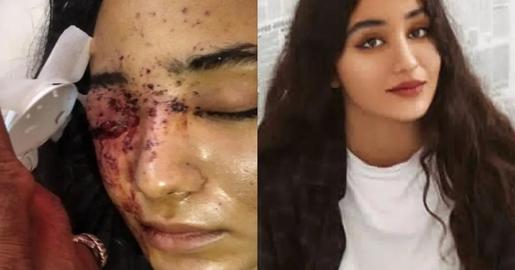
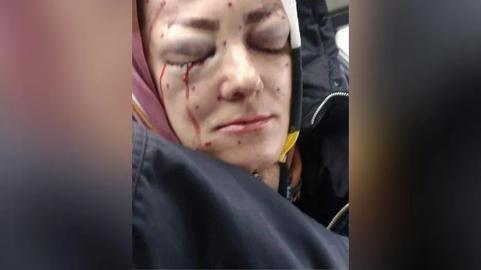
The fourth element is the perpetrators’ knowledge of the existence of an attack on a civilian population. According to the testimonies of doctors, and their letters and confidential reports to the authorities, it seems undeniable that officials are aware of a deliberate pattern of attempting to blind protesters on a massive scale.
On November 14, 120 specialists and professors of ophthalmology signed a letter to Mahmoud Jabbarvand, Secretary-General of the Iranian Ophthalmology Association, warning of the consequences of shooting protesters in the eyes with shotguns and paintball guns. On November 19, another letter was sent, this time by cornea specialists, and gave a similar warning. On November 25, 140 ophthalmologists warned about damage to protesters' eyes caused by shotgun pellets and paintballs. On December 22, Jabbarvand announced that a confidential report about pellets striking eyes was sent to authorities.
Iranian authorities and security officials were therefore aware of the existence of such a pattern among their forces, on the ground, but did not take any preventive measures to limit or end such attacks. Nor did they conduct any investigations into these allegations. Instead, Hossein Kermanpour, the head of the Sina Hospital emergency room who first warned about these attacks, was reportedly dismissed from duty.
In September 2022, Amnesty International reported on a leaked document in which Iran’s highest military body ordered the commanders of armed forces in all provinces to “severely confront” protesters. The document reveals that the Iranian authorities had a plan for a widespread and systematic attack on civilians to crush the protests. And in another letter, the highest military commander of Mazandaran province ordered protests to be supressed “mercilessly” and by any means necessary, including by “causing deaths”.
The ICC’s jurisdiction
The International Criminal Court has jurisdiction over crimes against humanity and war crimes committed after July 2002, and it can prosecute crimes against humanity even if not committed in a time of war. The ICC prosecutes individuals responsible for crimes against humanity, not groups or states.
The ICC’s jurisdiction extends to prosecuting crimes committed on the territory of a state party, or by a national of a state party to the Rome Statute. The ICC Prosecutor can initiate an investigation if there is reliable information suggesting that crimes against humanity have been committed either in the territory of, or by nationals of. a state party. The ICC also has jurisdiction in cases where a matter is referred to it by the UN Security Council.
The ICC plays a complementary role to a state’s own judicial system, however, and it was not designed to replace national judicial systems ready and able to prosecute war crimes or crimes against humanity. The Court therefore only prosecutes cases where the states are either unwilling or are unable to prosecute in an effective manner.
“Iran is not a [state] party to the Court,” Professor Akhavan told IranWire. “So, none of the so-called triggering mechanisms, that is, neither the referral of a state party nor the initiation of the investigation by the ICC Prosecutor would apply. The only possibility would be the referral of the situation by the Security Council. But that would be subject to affirmative vote or at least an abstention on the part of the permanent members of the Security Council.”
It is unlikely, at least soon, that the Security Council will agree on referring cases of Iranian security forces to the International Criminal Court.
“Even if they did,” Akhavan added, “the ICC moves very slowly and has serious resource constraints. But why couldn’t we begin to think in terms of a prosecution before the independent and impartial courts of a [future] democratic state in Iran, rather than putting all our hopes on the ICC?”
A different option could use the principle of universal jurisdiction, which gives any state jurisdiction over serious crimes against international law, such as crimes against humanity, regardless of where the alleged crimes occurred or whether the victim or perpetrator is a national of the prosecuting state. The principle allows national courts in third countries to address international crimes outside their territorial jurisdiction – based on the principle that such serious crimes harm the entire international community.
Examples of such cases have already emerged. Crimes against humanity have been addressed under the principle of universal jurisdiction in Germany, for instance, in a landmark ruling by a German court which sentenced a former Syrian intelligence officer to life in prison for involvement in crimes against humanity.
Who can be prosecuted for crimes against humanity?
Charges of crimes against humanity can be brought against individuals, including either against a person who gave orders for the commission of such crimes, or against a person who carried out those orders and aided their execution.
An alleged perpetrator may not have committed all the actions encompassed in a crime against humanity; but if they are part of an attack on a civilian population, they could still be guilty of taking part in a crime against humanity.
“When prosecuting someone for crimes against humanity, that individual does not have to be responsible for each and every act that is committed in execution of this violent repression,” Professor Akhavan told IranWire. “Theoretically, a single murder can qualify as a crime against humanity, if the perpetrator is aware that his single act of intentional killing is in execution of this wider attack against a civilian population. You don’t need to kill a thousand people to be guilty of crimes against humanity.”
The evidence and documents that have leaked from high-ranking military and security headquarters inside Iran suggests that almost all levels of the country’s security forces, from highest to the lowest, were aware of a plan to violently attack protesters by any means necessary. Each security agent that has been involved in mass atrocities during the recent crackdowns, including those responsible for blinding protesters, would therefore be liable to prosecution for crimes against humanity.
“It is worth noting that [following] a superior’s orders is not a defence with regards to crimes against humanity,” adds Professor Akhavan. “You cannot say that I was ordered to commit crimes against humanity and therefore I am not guilty.”
Can manufacturers of equipment used to blind protesters also be held liable?
Manufacturers of equipment used for attacks that amount to crimes against humanity may not be directly involved in the commission of such crimes. Holding those manufacturers responsible for such crimes is not as straightforward as prosecuting those who gave orders and those who carried them out. While sanctions exist, selling shotguns, paintball guns and ammunition to Iran may not be prohibited in some countries. But if companies which sold such equipment to Iran were aware of their intended use in widespread and systematic attacks on civilians, then “they [too] can be considered as aiding and abetting the crime,” says Professor Akhavan. Certainly, the sale of such weapons now, when their likely use by the Iranian authorities is known, could be said to be knowingly aiding and abetting any crimes that they may be subsequently used to commit.
A landmark French ruling in the case of Lafarge Cement shows that corporations can be liable for their involvement in crimes against humanity. Lafarge had been accused of aiding and abetting in such crimes after it had agreed with Islamic State in Syria to keep a cement factory in the country open, and had purchased oil and other commodities from armed Syrian groups. In May 2022, the Paris Court of Appeal upheld the charges against Lafarge , for aiding and abetting crimes against humanity, and in so doing it enforced a September 2021 ruling of the French Supreme Court.
In another case, Prosecutor v Charles Ghankay Taylor, the former Liberian dictator, was convicted of aiding and abetting war crimes and crimes against humanity by “providing arms and ammunition, military personnel, operational support, moral support and ongoing guidance.” In this case, the Special Court for Sierra Leone held that “aiding and abetting” requires providing practical assistance, encouragement, or moral support, with a substantial effect on the commission of a crime.
And in the case of Public Prosecutor v Guus Kouwenhoven, the Supreme Court of the Netherlands addressed the case of a businessman who owned logging companies in Liberia and used his companies to import, store and distribute arms that were then used by Charles Ghankay Taylor in the commission of war crimes during Liberia’s 1999 civil war. sKouwenhoven was first acquitted of complicity in war crimes, in 2006, due to a lack of evidence. But the Supreme Court ordered a retrial, which began in 2017 before the Court of Appeals, and which found the defendant guilty of aiding and abetting war crimes by knowingly providing the means for the commission of crimes. Kouwenhoven was sentenced to 19 years in prison – a sentence which was upheld by the Supreme Court.
visit the accountability section
In this section of Iran Wire, you can contact the officials and launch your campaign for various problems











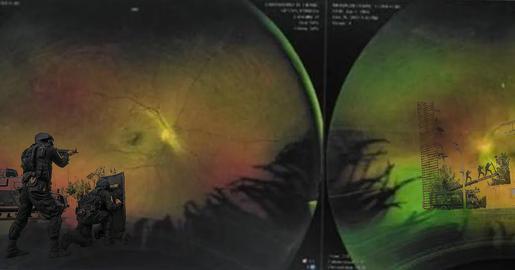
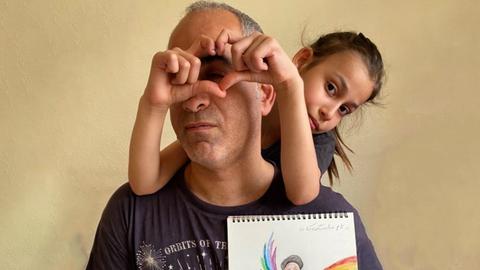
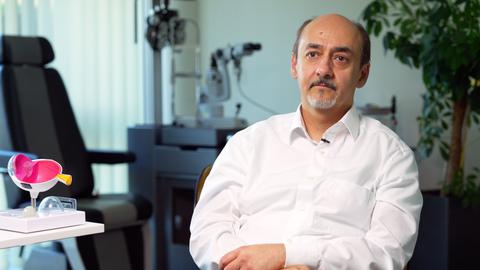



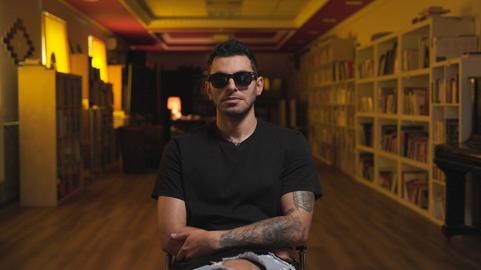


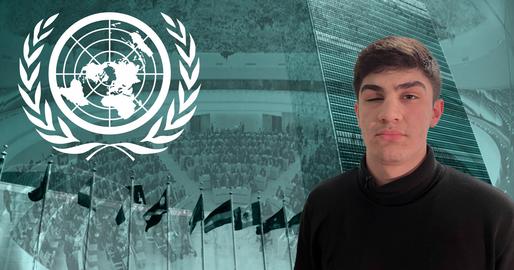


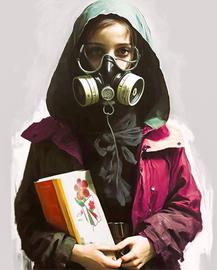
comments